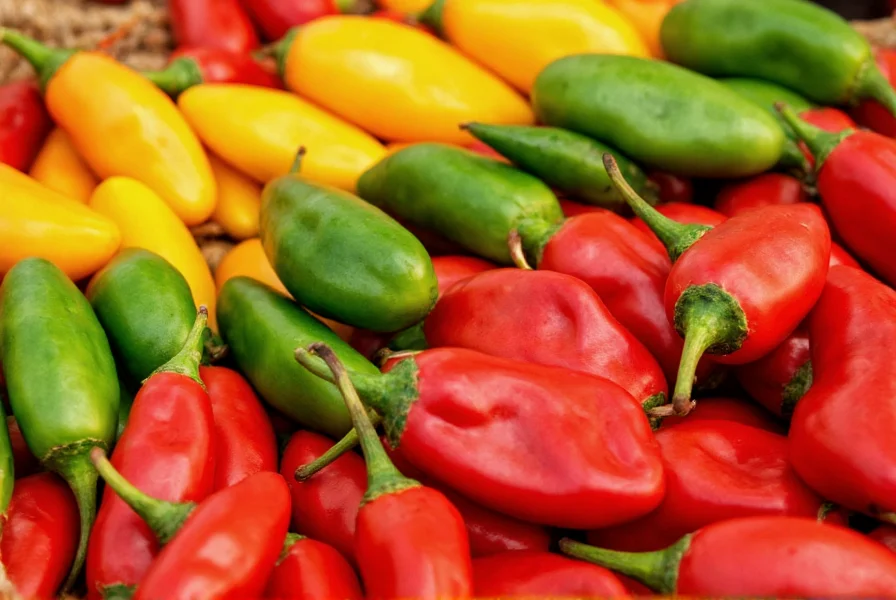Understanding what define chili truly means requires distinguishing between these two completely different food items that share the same name. This confusion affects millions of home cooks and food enthusiasts searching for accurate information about this versatile culinary term.
Chili Peppers: The Fiery Fruit
Chili peppers belong to the Capsicum genus within the nightshade family. These fruits contain capsaicin, the compound responsible for their heat. The Scoville scale measures their spiciness, ranging from 0 (bell peppers) to over 2 million units (Carolina Reaper).
| Chili Pepper Variety | Scoville Heat Units | Common Uses |
|---|---|---|
| Jalapeño | 2,500–8,000 | Salsas, nachos, pickled dishes |
| Serrano | 10,000–23,000 | Pico de gallo, hot sauces |
| Habanero | 100,000–350,000 | Caribbean cuisine, hot sauces |
| Ghost Pepper | 855,000–1,041,427 | Extreme heat challenges, specialty sauces |
When someone asks to define chili in botanical terms, they're typically referring to these peppers. Over 30 species exist, with five domesticated for human consumption. Chili peppers originated in the Americas and spread globally after Columbus's voyages.

Chili Con Carne: The Hearty Stew
When people search to define chili in American culinary contexts, they often mean chili con carne ("chili with meat"). This Texan dish features:
- Ground or cubed meat (typically beef)
- Dried chili peppers or chili powder
- Tomatoes or tomato paste
- Beans (in most modern versions)
- Onions, garlic, and spices
Authentic Texas-style chili contains no beans, while Cincinnati chili features Mediterranean spices and is served over spaghetti. The dish gained popularity during the late 19th century among cowboys and railroad workers who needed portable, high-energy food.
Origin of the Term & Common Misunderstandings
The word "chili" comes from the Nahuatl (Aztec) word "chīlli," referring to the pepper. Spanish colonizers adapted it as "chile," which evolved into "chili" in English.
Key distinctions when you need to accurately define chili:
- Chile (with 'e'): Preferred spelling when referring specifically to the peppers in culinary contexts
- Chili (with 'i'): Standard spelling for both the peppers and the dish in American English
- Chilli (double 'l'): Common British English spelling
Many people searching to define chili meaning encounter confusion because recipes and products use the term inconsistently. Grocery stores sell "chili powder" (a spice blend), "chili peppers" (fresh or dried), and "chili mix" (for making the stew).
Global Variations and Cultural Significance
While chili peppers grow worldwide, regional variations demonstrate how cultures have adapted them:
- Mexico: Complex moles featuring multiple chili varieties
- Thailand: Bird's eye chilies in curries and dipping sauces
- India: Kashmiri chilies in tandoori dishes
- Hungary: Sweet paprika made from mild chilies
Understanding how to properly define chili requires recognizing these cultural contexts. In Mexican cuisine, "chile" specifically denotes the pepper, while "chili" refers to the American stew—a distinction many English speakers miss.
Practical Applications for Home Cooks
When working with chili components, consider these practical tips:
- Wear gloves when handling extremely hot varieties like habaneros
- Remove seeds and membranes to reduce heat intensity
- Toast dried chilies before rehydrating to enhance flavor
- Balanced chili con carne benefits from chocolate or coffee for depth
Knowing how to define chili correctly prevents recipe failures. Using cayenne when a recipe calls for mild ancho chilies creates an inedibly hot dish, while substituting bell peppers for jalapeños removes essential flavor dimensions.











 浙公网安备
33010002000092号
浙公网安备
33010002000092号 浙B2-20120091-4
浙B2-20120091-4